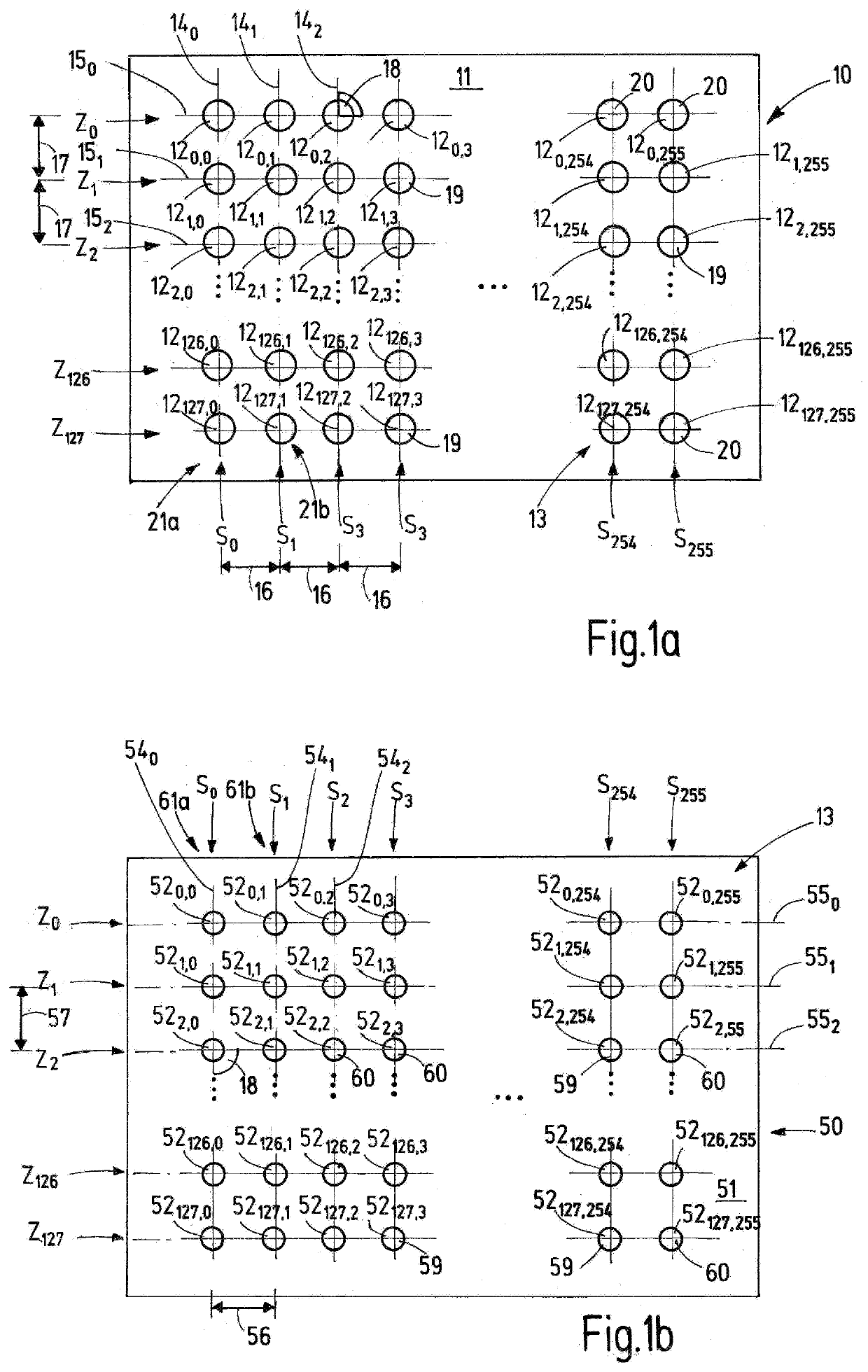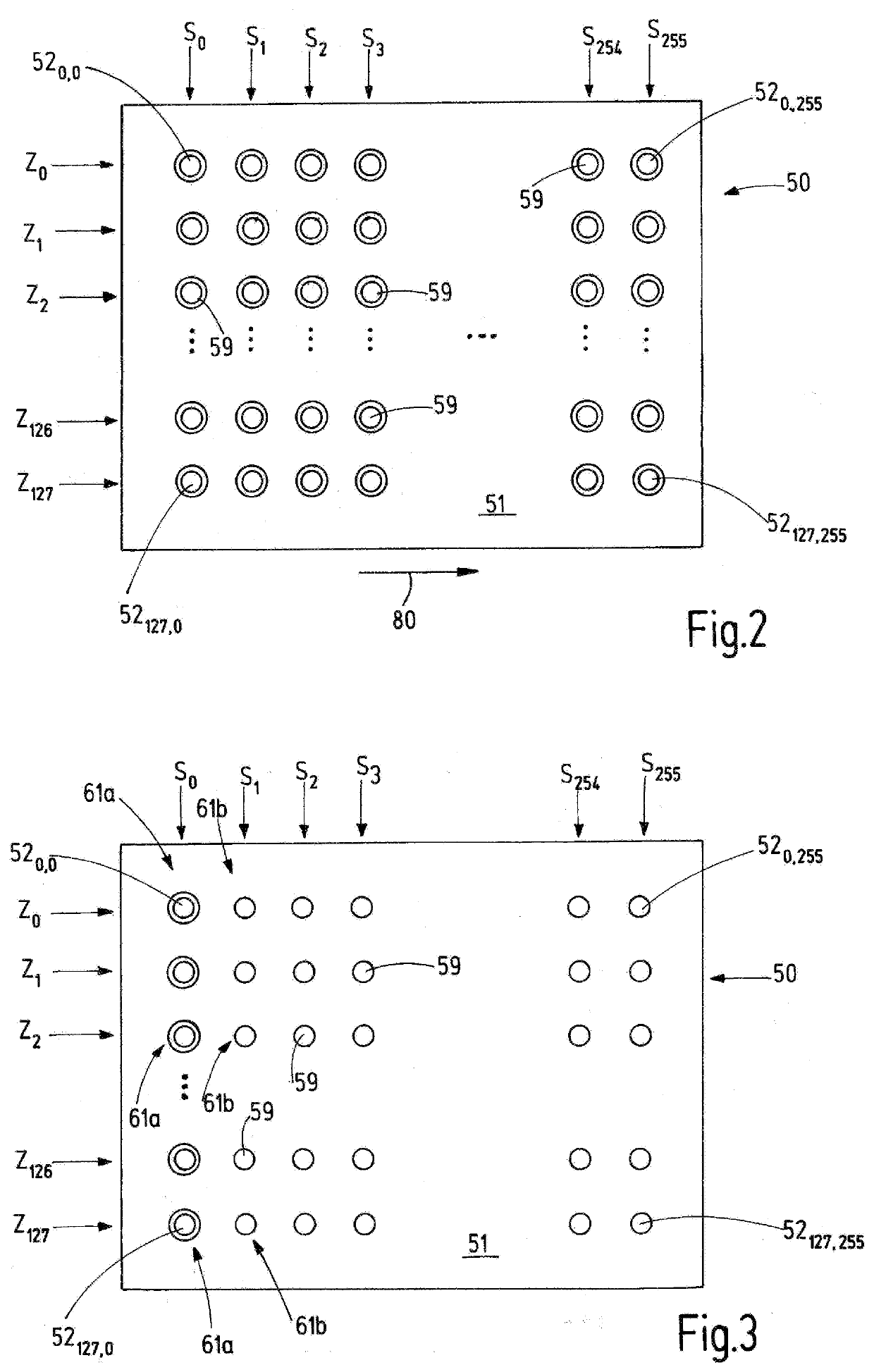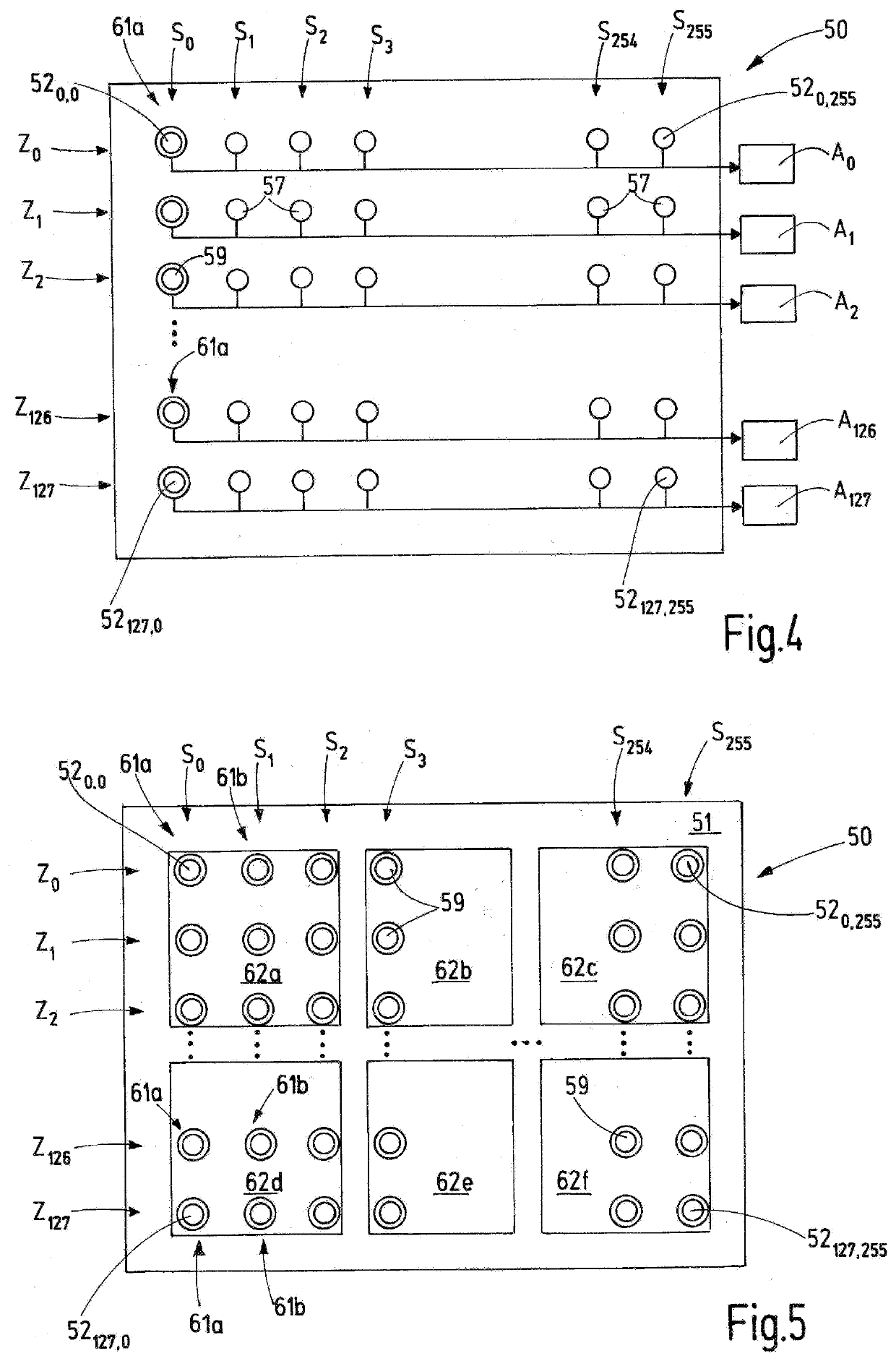Method and device for optically measuring distances
a distance measurement and optical measurement technology, applied in measurement devices, instruments, using reradiation, etc., can solve the problems of inability to adjust the distance measurement, the size and cost of the sensor, and the flash lidar sensor known from prior art is extremely susceptible to outside disturbance, so as to improve the accuracy of distance measurement, eliminate the need for moving parts, and improve the effect of distance measuremen
- Summary
- Abstract
- Description
- Claims
- Application Information
AI Technical Summary
Benefits of technology
Problems solved by technology
Method used
Image
Examples
Embodiment Construction
[0066]FIG. 1a presents a top view of a transmission matrix (10) of a device according to the invention. FIG. 1a depicts one side (11) of the transmission matrix (10), on which transmission elements (120,0 to 12127,255) are arranged in a regular pattern. The pattern involves a uniform grid form (13). The transmitting elements (120,0 to12127,255) can be divided into rows (Z0 to Z127) and columns (S0 to S255). The transmission matrix (10) consists of 128 rows and 256 columns of transmitting elements in all. The notation “ . . . ” on the figure denotes that additional elements of the matrix are present at this point that were not shown for the sake of clarity. In the subscripted digit in the numbering of transmitting elements (120,0 to 12127,255), the first number denotes the row of the transmission matrix (10) in which a specific transmitting element is located, while the second number in the subscripted digit quantifies the column in which this transmitting element is arranged.
[0067]T...
PUM
| Property | Measurement | Unit |
|---|---|---|
| distance | aaaaa | aaaaa |
| field of view | aaaaa | aaaaa |
| rotation | aaaaa | aaaaa |
Abstract
Description
Claims
Application Information
 Login to View More
Login to View More - R&D
- Intellectual Property
- Life Sciences
- Materials
- Tech Scout
- Unparalleled Data Quality
- Higher Quality Content
- 60% Fewer Hallucinations
Browse by: Latest US Patents, China's latest patents, Technical Efficacy Thesaurus, Application Domain, Technology Topic, Popular Technical Reports.
© 2025 PatSnap. All rights reserved.Legal|Privacy policy|Modern Slavery Act Transparency Statement|Sitemap|About US| Contact US: help@patsnap.com



